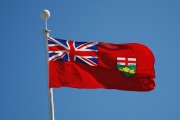The world is in a race to build a new energy economy on a foundation of affordable clean electricity, and the prize for winners is economic and industrial prominence. Last week, the Government of Ontario firmly put itself in the running, committing to proactive planning that prioritizes efficiency, affordability, reliability, and emissions reductions.
The province’s commitment to increased investment in competitive generation procurements, transmission infrastructure, and expanded energy efficiency programs signals that the Ontario government is serious about preparing the grid for tomorrow’s demands. The announced Integrated Energy Resource Plan (IERP) consultation process, the first of its kind in the province, is an important preliminary step towards making Ontario’s ambitious vision a reality. How the province works through details of this plan will be critical to ensure its future is electric.
The IERP announcement could not come at a better time. The Independent Electricity System Operator (IESO) now anticipates a 75% increase in energy demand by 2050, up from the 60% they forecasted last year. This jump is attributed to growing loads from data centres, commercial building electrification, and the electrification of existing and new industrial projects that have been attracted by the province’s track record for affordable clean energy. The anticipated 75% demand increase is still lower than the Canadian Climate Institute’s projections, but the directional adjustment shows that Ontario is joining the likes of Quebec and British Columbia in thinking big about the impacts of electrification and what can be done now to enable tomorrow’s growth.
The commitments to enhanced and expedited transmission planning and expanded energy efficiency are also positive steps towards a capable future grid. Today, transmission development timelines lag generation and load connections, creating bottlenecks that prevent system growth.
Building and upgrading Ontario’s transmission infrastructure will support the province’s ongoing energy procurements, hydroelectric plant refurbishments, and nation-leading battery storage procurement as well as future load growth by ensuring electricity can get from where it is produced to where it is needed. Energy efficiency initiatives, which have already played a big role in Ontario’s clean energy success, will also help reduce the burden on the provincial grid by reducing peak demand and energy costs while increasing interties between Ontario and its neighbours will also support trade and cost-efficient sharing of existing generation assets.
However, these positive steps mean nothing if they are not implemented. The IERP will be key to keeping Ontario’s electricity system accountable and on track to achieving the government’s vision for clean energy leadership. The IERP must include details such as specific accountabilities, targets, timelines, and the cost of each electricity system investment in bringing the plan to life. Measurable targets and timelines allow for progress tracking, and they also provide a goal against which future electricity system investments can be assessed. And a clear delegation of roles through the plan will reduce uncertainty among system actors and align the sector towards the shared targets.
The IERP also should include specifics relating to the role of renewable energy sources, the lowest-cost form of generation available, as well as a natural gas policy statement that offers clear direction on the role of the resource in Ontario’s long-term energy system and underscores the province’s intention to continue to reduce emissions. Prohibitive policies, like the province’s blanket ban on ground-mounted solar in agricultural areas, will need to be revisited in the IERP process. Farmers and municipalities around the world have successfully integrated agricultural production and electricity generation on their land and reaped the financial benefits these arrangements can bring. The IERP must ensure that landowners and municipalities are empowered to support Ontario’s energy grid and maximize the mutual benefits agrivoltaics provide.
Ontario’s grid is already 89% emissions-free, and it has a range of readily available non-emitting resources. The IERP is an important opportunity to solidify Ontario’s clean energy reputation far into the future through advanced planning towards a shared vision for tomorrow’s grid. Including as much detail in the IERP as possible now will build confidence in the province’s direction, attracting new industrial investments and powering economic growth for years to come.







